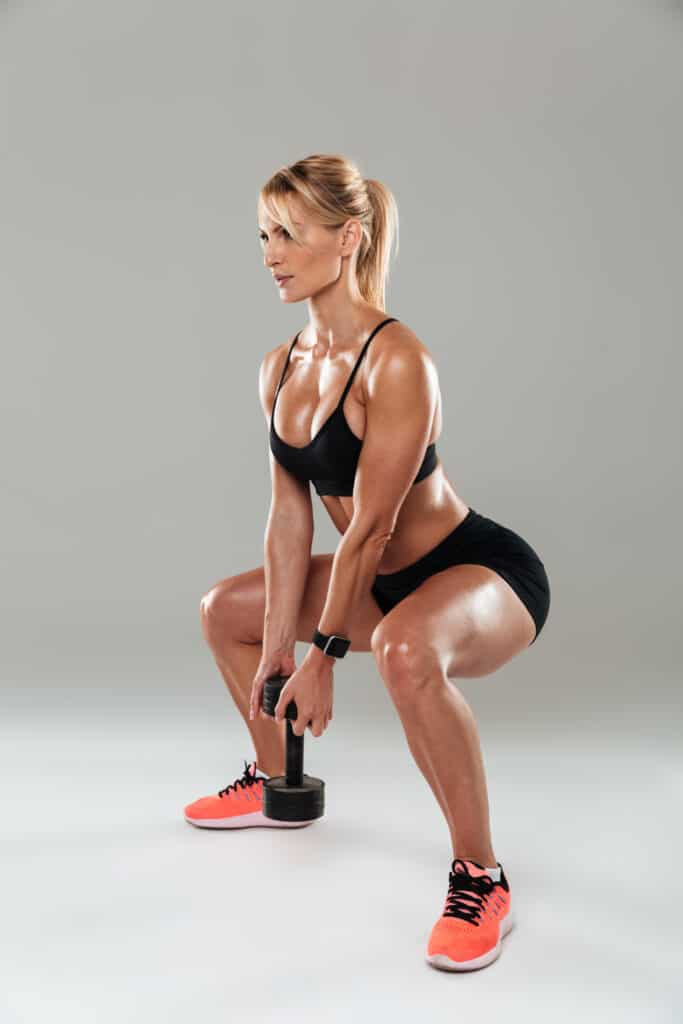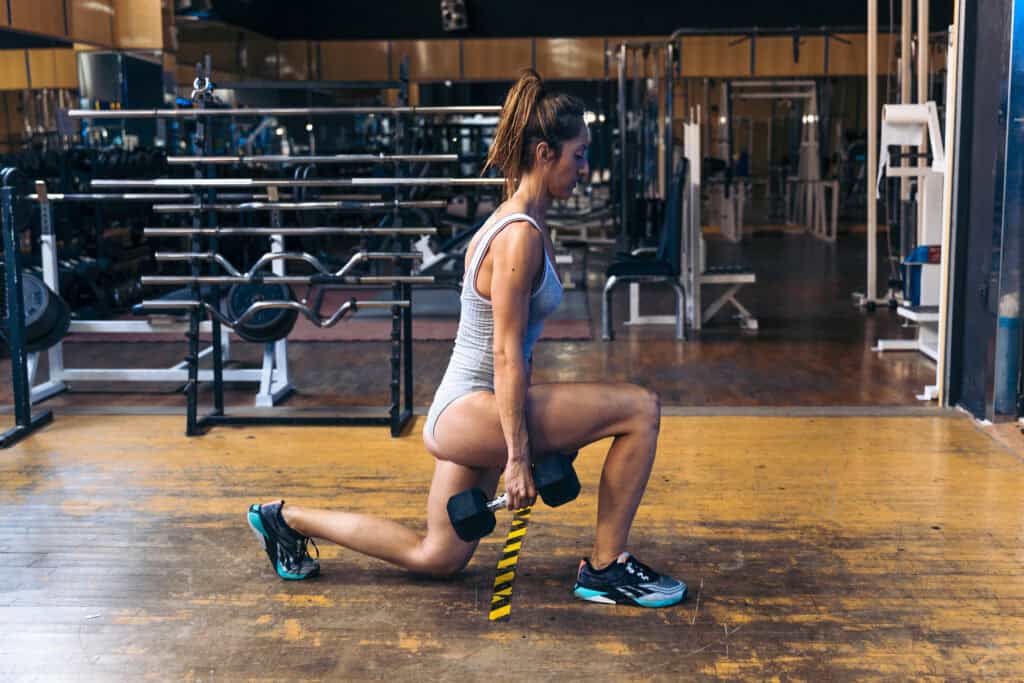If you’re limited to just a pair of dumbbells, whether at home or in the gym, don’t worry—there’s no need for fancy machines to build strong, powerful legs. With the right exercises, you can target key leg muscles, improve strength, and boost overall athletic performance. This post will cover five of the best dumbbell leg exercises and explain why compound movements are so valuable for developing lower body strength.
Why Compound Movements Matter
Before diving into the exercises, it’s essential to understand the value of compound movements. Compound exercises engage multiple joints and muscle groups at the same time, as opposed to isolation exercises that target a single muscle. For example, a leg extension machine only focuses on your quadriceps, while a squat activates your quadriceps, hamstrings, glutes, and even your core.
The benefits of compound exercises include:
- Greater muscle activation: You target more muscles in one movement, promoting more balanced strength and muscle development.
- Increased calorie burn: Engaging larger muscle groups means expending more energy, which is great for fat loss and conditioning.
- Functional strength: Compound exercises mimic real-world movements, helping you develop strength that translates into daily activities and sports performance.
- Efficiency: With limited equipment and time, compound exercises allow you to maximize your workout, hitting multiple muscles in one go.
Now, let’s get into the top five dumbbell leg exercises you can do with limited equipment.
1. Dumbbell Squats
Muscles Worked: Quadriceps, glutes, hamstrings, calves, and core
Why It’s Great: The dumbbell squat is the king of lower-body exercises. Squats are a foundational movement pattern that strengthens your legs and engages your core for stability. By holding dumbbells at your sides or up at shoulder height (goblet squat position), you increase resistance, challenging both your quads and glutes while keeping your posture upright.
How to Perform:
- Hold a dumbbell in each hand at your sides or one dumbbell at chest height in goblet style.
- Stand with feet shoulder-width apart.
- Lower yourself into a squat, keeping your chest up and back straight.
- Drive through your heels to stand back up.
Why It’s a Compound Movement: The dumbbell squat engages multiple joints (hips, knees, ankles) and major muscles, including the quadriceps, glutes, hamstrings, and core. This makes it one of the most effective exercises for building overall leg strength.
2. Dumbbell Lunges
Muscles Worked: Quadriceps, glutes, hamstrings, calves, and core
Why It’s Great: Dumbbell lunges target each leg individually, correcting muscle imbalances while increasing leg strength and stability. They also work the stabilizer muscles, making them essential for balance and coordination.
How to Perform:
- Hold a dumbbell in each hand at your sides.
- Step forward with one foot and lower your body until both knees are bent at 90 degrees.
- Push through the front heel to return to the starting position, then switch legs.
Why It’s a Compound Movement: Lunges are a dynamic, multi-joint movement that strengthens your legs, glutes, and core while enhancing balance and coordination.

3. Dumbbell Step-Ups
Muscles Worked: Quadriceps, glutes, hamstrings, calves, and core
Why It’s Great: Step-ups target your quads and glutes with a functional movement pattern that translates well into daily activities, such as climbing stairs. The added challenge of balancing on one leg also activates stabilizing muscles.
How to Perform:
- Hold a dumbbell in each hand and stand in front of a bench or sturdy box.
- Step one foot onto the bench and drive through that heel to lift your body up.
- Bring your other foot up to meet the first, then step back down and alternate legs.
Why It’s a Compound Movement: Similar to lunges, step-ups work multiple muscle groups at once, including your quads, glutes, and hamstrings, while also enhancing balance and core strength.
4. Dumbbell Romanian Deadlifts (RDLs)
Muscles Worked: Hamstrings, glutes, lower back, and core
Why It’s Great: Dumbbell Romanian deadlifts target the hamstrings and glutes while also working the lower back. They are excellent for developing posterior chain strength, which is often overlooked in traditional leg routines.
How to Perform:
- Hold a dumbbell in each hand in front of your thighs.
- With a slight bend in your knees, hinge at your hips and lower the dumbbells toward your feet.
- Keep your back straight and push your hips backward.
- Drive through your heels and extend your hips to return to the starting position.
Why It’s a Compound Movement: The hip hinge motion of the RDL activates multiple muscles across the posterior chain (hamstrings, glutes, and lower back), making it a key exercise for building functional strength.
5. Dumbbell Bulgarian Split Squats
Muscles Worked: Quadriceps, glutes, hamstrings, calves, and core
Why It’s Great: Bulgarian split squats isolate each leg, improving strength and stability while reducing the risk of muscular imbalances. The elevated back foot adds an extra challenge to balance, making this one of the most challenging lower-body exercises.
How to Perform:
- Hold a dumbbell in each hand and stand in front of a bench or elevated surface.
- Place one foot behind you on the bench and lower into a squat with the front leg.
- Drive through the front heel to return to the starting position, then switch legs.
Why It’s a Compound Movement: The Bulgarian split squat works multiple joints and muscles, including the quadriceps, hamstrings, glutes, and core, while improving balance and stability.
Conclusion
Compound movements, like the five dumbbell leg exercises covered here, are invaluable for building leg strength and overall athleticism. By working multiple muscle groups at once, you not only save time but also increase the effectiveness of your workout. Whether you’re training at home or in the gym, these exercises will help you develop strong, functional legs with minimal equipment.
References
- Schoenfeld, B. J. (2010). Squatting kinematics and kinetics and their application to exercise performance. Journal of Strength and Conditioning Research, 24(12), 3497-3506.
- Contreras, B., & Schoenfeld, B. J. (2011). The biomechanics of hamstrings during the Romanian deadlift. Strength & Conditioning Journal, 33(6), 58-66.
Stay Strong Together
If you’re serious about building muscle and reaching your fitness goals, the Jefit app is the perfect tool to help get you there. With over 20 million downloads and more than 12 million bodybuilders using the app to track their workouts, Jefit is the ultimate strength training companion. Rated as the 2023 Best App and featured by top publications like Men’s Health, PC Magazine, and USA TODAY. Jefit boasts 42,000+ five-star ratings for its user-friendly design and comprehensive features. Whether you’re focused on protein intake, building strength, or tracking your progress, Jefit has everything you need to succeed. Download Jefit today and join millions of fitness enthusiasts transforming their bodies!
- The New Rules of Strength Training in 2026 - December 24, 2025
- Fibermaxxing: Viral Nutrition Trend You Should Know - December 17, 2025
- Hybrid Metabolic Strength Training for Faster Results - December 10, 2025
